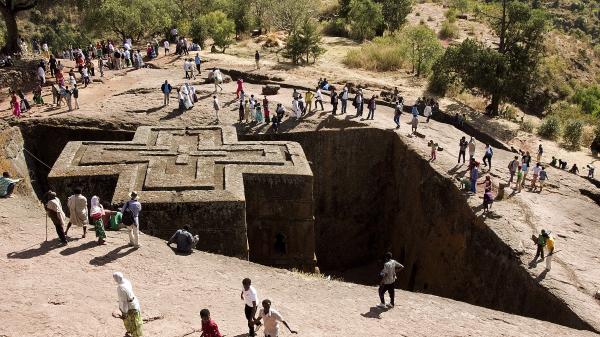The Ethiopian Leap Year
A leap year in the Ethiopian calendar occurs every 4 years when an extra day is added to the last month of the year.

Bete Giyorgis in Lalibela, Ethiopia.
©iStockphoto.com/geneward2
Adds Leap Day
The Ethiopian calendar consists of 13 months, where the first 12 months have 30 days each. The 13th month has 5 days in a common year and 6 days in a leap year.
It is a solar calendar, based on the solar (tropical) year. The Ethiopian calendar's historical roots are the same calculations that lie behind today's Gregorian calendar and its predecessor, the Julian calendar.
Why Add Leap Years?
Leap years are needed to keep the calendar in alignment with Earth's revolutions around the Sun.
It takes Earth approximately 365 days, 5 hours, 48 minutes, and 45 seconds (365.242189 days) to circle once around the Sun. This is called a tropical year (solar year) which is usually measured from one March equinox to the next.
Every 4 Years Is Too Often
Like in the Julian calendar, a leap year in the Ethiopian calendar is added every 4 years, without exception. However, this is too often compared to the length of a solar year.
Because of this, both the Julian and the Ethiopian calendar are several days out of sync with the fixed dates for astronomical seasons such as equinoxes and solstices. This is the reason why the Gregorian calendar eventually replaced the Julian system to become the world's standard civil calendar.
The Ethiopian calendar starts the year on what corresponds to September 11/12 in the Gregorian calendar.
Since the beginning of March 1900 until the end of February 2100, the Ethiopian leap years have coincided with leap years in the Gregorian calendar.
The more advanced leap year formula makes the Gregorian calendar far more accurate than the Ethiopian calendar. However, it is not perfect either. Compared to the tropical year, it is off by 1 day every 3236 years.